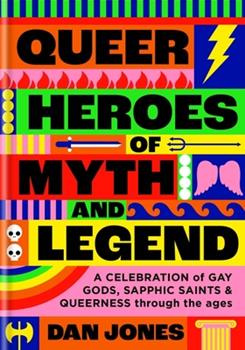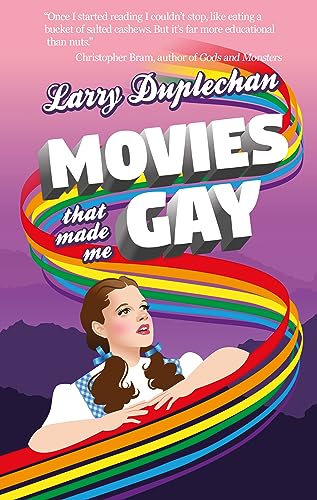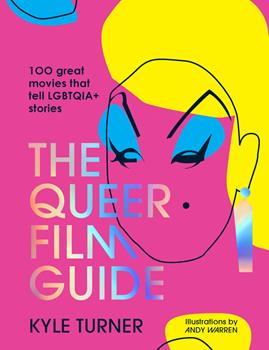 QUEER HEROES OF MYTH AND LEGEND
QUEER HEROES OF MYTH AND LEGEND
A Celebration of Gay Gods, Sapphic Saints, and Queerness Through the Ages
by Dan Jones
Radar. 219 pages, $19.99
Dan Jones, author of 50 Drag Queens Who Changed the World and several books about cocktails, keeps things entertaining in this overview of fifty queer mythic heroes. He writes like your campy gay friend who studied religion in college and calls the Norse god Loki “mythology’s sloppy frat bro” and the Greek god Pan “the hairy-legged goat-daddy of the eternal cruising grounds.” Queer Heroes is a quick read, a good starting point for readers who want to learn about queer myths and legends before delving into the topic more deeply.
Roughly a third of the book is devoted to Greek and Roman mythology. Jones discusses many of the ancient world’s most famous queer icons, such as Achilles and Patroclus (a “tragic, musclebound love story”) and Zeus (“the busiest bisexual the mythical world has ever known”). However, he also discusses lesser-known figures such as Iphis, who changed gender from female to male, and Baubo, who exposed her vulva to cheer up the goddess Demeter.
Jones also covers many figures from other cultures, like gender-swapping Princess Budur from One Thousand and One Nights, Tu’er Shen (a queer Taiwanese rabbit god), and the Inuit spirit Sedna. His book includes some historical figures, like the Daughters of Bilitis and the Minoan Brotherhood (a gay Wiccan group founded in the 1970s), but also characters from contemporary literature and popular culture. LGBT people tend to find inspiration wherever we can, so why not look to Yara Greyjoy from Game of Thrones or video-game icon Zelda? Queer heroes can be found in some unusual places.
Peter Muise
Alexey put on layers of clothes, readying himself for the long winter walk in deep Siberia to his elementary school, the Palace of Knowledge. Called “alien” there due to his large head, he spent time alone with thoughts of escaping the swirling antagonisms. Physical Culture courses were the bane of his existence. Instead, he buried himself in the school library, where poetry books and an English language program caught his interest. He was hooked, and he found his way to the Pioneers’ House of Culture, where he recited a poem by Pushkin, winning a spot at a summer camp for gifted children. That led to his acceptance into a prestigious gymnasium for elite students.
Alexey met Andrey there, an older and wiser student who became his constant companion. After spending time together, Andrey whispered: “I’m afraid I love you.” Nothing had prepared Alexey for this declaration, though in his heart he knew he felt the same toward Andrey. Through long walks, tram rides, and discussions, Andrey’s ideas about literature, music, and culture flooded Alexey’s mind. At graduation, they joined a summer tour of Moscow, Berlin, Paris, and Amsterdam. Encouraged by Andrey to run off and remain in the West, seeking asylum as members of a sexual minority, Alexey balked at the idea: he could not do it.
Returning to Siberia alone, Alexey wondered what happened to his friend Andrey: did his dream come true? Meanwhile, he intently studied English. A national contest to write a best essay in English offered the prize of a year’s study in New York City. Alexey met the challenge and won a place. He was confident now on his own pathway out of Russia. He would immerse himself in writing, finding a way to stay in the West, never to return to Siberia.
Joe Ryan
Celebrated author Larry Duplechan (Blackbird and the Lambda Award-winner Got ‘til it’s Gone) has written a trippy tour through film history, specifically films that have shaped his gay sensibility. Duplechan’s book reads like an inspired recommended screening list, featuring his often hilarious riffs on various movies and TV shows. Many of the films he included won’t be a shock, coming from a queer Black writer, films such as Maurice, My Beautiful Laundrette, and Paris is Burning (a film he says he’s addicted to), but others might surprise, such as Die Hard 4.
The book is sprinkled with poignant autobiographical notes. The author was close friends with Vito Russo (The Celluloid Closet), who’s described as “the Jesus of gay movies.” and recounts the joy he felt when Russo wrote a glowing blurb for the book cover of Blackbird: “I felt as if I had won an Oscar.” Equally gripping is the author’s frank account of watching the film version of Blackbird, given that he had no hand in writing the screenplay as it had been adapted by someone else. This passage is equal parts bitter and sweet, the words of an author torn between elation over someone making a movie out of his book with the disappointment over so many shifts and changes from the source material: “So we’re clear,” he pronounces, “I think Blackbird is a good little movie. I just don’t think it’s a very good adaptation of my book. … I can’t help wishing [filmmaker Patrik-Ian Polk]had trusted it a bit more.” Movies That Made Me Gay is a mash-up of memoir and film criticism that is as informative as it is emotionally charged. Film buffs will swoon.
Matthew Hays
 WHO DOES THAT BITCH THINK SHE IS? Doris Fish and the Rise of Drag
WHO DOES THAT BITCH THINK SHE IS? Doris Fish and the Rise of Drag
by Craig Seligman
Public Affairs (a Hachette imprint)
342 pages, $29.
Born in 1952 in Manly Vale, an ironically named suburb of Sydney, Australia, Philip Clargo Mills began frequenting drag bars in his late teens. By the early 1970s, he was performing in the same bars as Doris Fish, a member of a performance troupe called Sylvia and the Synthetics. Their transgressive and sometimes drug-fueled performances—which included singing, dancing, and pelting the audience with everything from whipped cream to dead fish—were influenced by San Francisco’s famous Cockettes.
After several visits to the Bay Area, Doris Fish relocated to San Francisco, where he became involved in the city’s alternative art scene, appearing with the well-known rock band The Tubes and becoming a drag superstar. He sometimes supported himself with sex work, but never in drag: “I could pick up gorgeous men in drag, but then they’d mess your makeup, tear your blouse—I mean, it’s just dreadful.” Fish gathered a circle of likeminded drag queens and artists who performed with him on stage and in his magnum opus, the feature-length drag science fiction film Vegas in Space (1991). The film has garnered a cult following among later generations of drag queens. Fish also modeled for a popular line of comedic greeting cards and appeared on several talk shows around the country.
Author Craig Seligman was a San Francisco journalist and peripherally involved in Fish’s circle, a connection that gives the book a warm, familiar tone. Doris Fish died of complications from HIV in 1991, and although Seligman addresses the AIDS epidemic, the book is joyous and often funny, focusing on Fish’s creativity and the community he built.
Peter Muise
Wisely avoiding the trap of attempting to list “the greatest” gay and lesbian films of all time, which would undoubtedly have provoked quibbles (or worse) from readers, this delightful guide sidesteps the issue by merely asserting that these are “100 great movies that tell LGBT stories.” Another feature of The Queer Film Guide is the way in which author Kyle Turner discusses queerness, even asserting that the very fluid term “queer” can include movies without any explicitly LGBT
characters.
In unusually perceptive profiles and analyses of each film, Turner makes a convincing case for works not usually included in such lists, such as Yentl and The Fly. He also provides useful recommendations of other films not fully discussed, and shows that he’s done his homework by including some lesser-known early silent movies with queer content. In addition to the usual contenders like The Boys in the Band or Torch Song Trilogy, it’s nice to see that art house and foreign films like Looking for Langston, Wild Reeds, and Yossi and Jagger made the list. Even so, there are a few surprising omissions, such as Beautiful Thing, Boys Don’t Cry, Y Tu Mama Tambien, and Call Me By Your Name. Organized chronologically, there are interesting facts and essays on every page, which makes for a reference source that’s both useful and fun.
Dale Boyer






